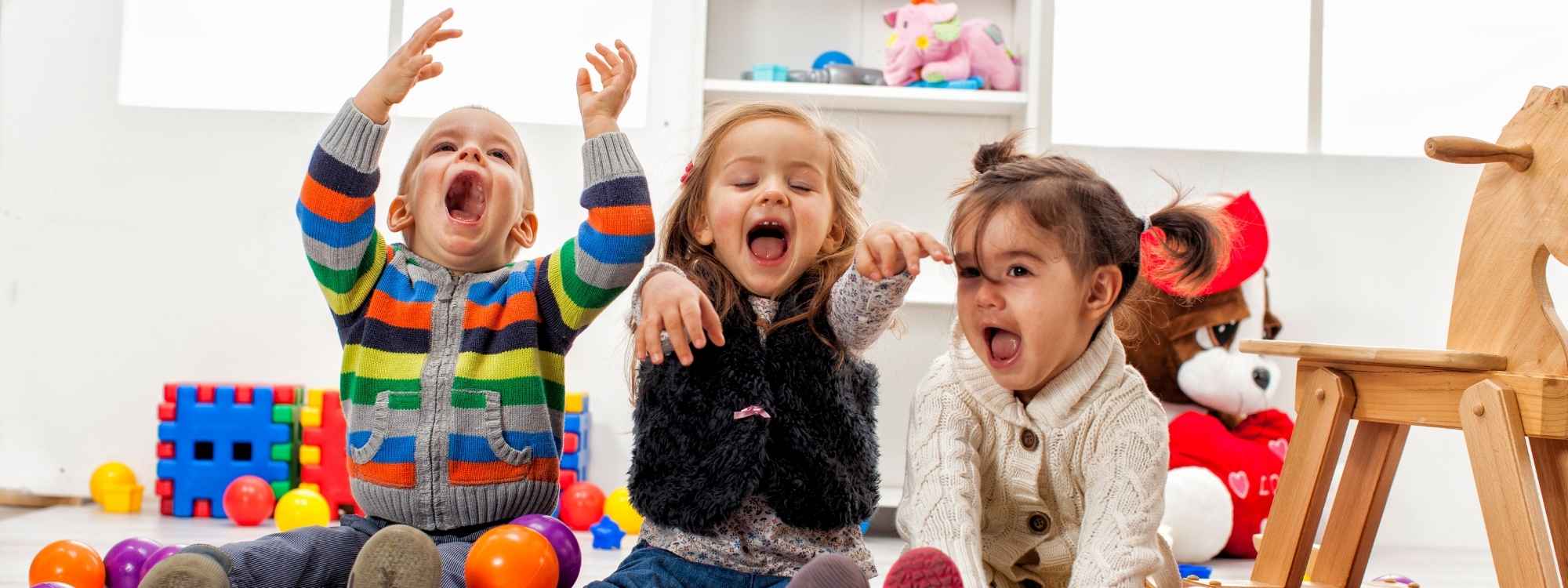What Makes a Good ABA Therapist? Key Traits & Red Flags
Applied Behavior Analysis (ABA) is a proven, evidence-based treatment that helps children with Autism Spectrum Disorder (ASD), ADHD, and other developmental delays build critical skills and reduce challenging behaviors. While ABA therapy is highly structured and data-driven, its success often hinges on one crucial factor: the therapist. Understanding what makes a good ABA therapist can make all the difference in your child’s progress and long-term outcomes.
A great ABA therapist blends strong clinical knowledge with patience, empathy, and adaptability. In this guide, we’ll explore the core qualities that define an effective ABA professional, red flags to avoid, and how the right therapist can support your child’s unique needs.
Introduction to Applied Behavior Analysis
ABA therapy is grounded in behavior science and focuses on improving socially significant behaviors, such as communication, play, social skills, and daily living abilities. It is widely recognized as a leading intervention for children with autism and other developmental disorders.
Therapists apply ABA principles to reinforce appropriate behaviors and reduce behaviors that interfere with learning and independence. This process includes assessment, treatment planning, skill teaching, and continuous data collection to measure progress. ABA can take place in clinics, schools, or in-home ABA therapy settings, making flexibility and adaptability essential for any provider.
Qualified professionals like Board Certified Behavior Analysts (BCBAs) oversee programs and create treatment plans. These plans are often implemented by Registered Behavior Technicians (RBTs) under supervision. Both roles require training, certification, and a strong understanding of behavior analysis techniques.
Qualities of an Effective ABA Therapist
A good ABA therapist goes beyond applying technical strategies. They bring energy, patience, and empathy into every interaction to build trust and engagement with the child. Establishing rapport is foundational to effective therapy sessions.
To foster cooperation and meaningful progress, therapists need to:
- Be engaging and fun: ABA sessions often involve play-based learning. A therapist who can turn therapy into an enjoyable experience helps motivate the child.
- Show patience and flexibility: Behavioral progress doesn’t always follow a straight path. A calm and flexible approach helps navigate resistance and regression.
- Use clear and positive communication: Therapists should model appropriate communication and support the child’s language development.
- Work well with families: Parent involvement is critical. A therapist should welcome collaboration and encourage consistency across environments.
In short, the therapist’s personality directly affects the child’s comfort and willingness to participate, which in turn affects therapy outcomes.
Essential Skills for ABA Therapists
Delivering effective ABA therapy requires a blend of academic knowledge, behavioral expertise, and soft skills. While personality is important, professional training ensures that techniques are applied ethically and effectively.
Core Qualifications:
- Education: BCBAs must hold a master’s degree in behavior analysis, psychology, or education.
- Certification: Passing the national certification exam from the Behavior Analyst Certification Board (BACB) is required for BCBAs. RBTs also complete a training course and competency assessment.
- Licensure: Some states require a license to practice ABA therapy, in addition to certification.
Technical Skills:
- Ability to conduct assessments and identify the function of behaviors
- Knowledge of ABA techniques like prompting, fading, and reinforcement schedules
- Experience creating or following a treatment plan based on individualized goals
- Data collection and analysis to measure progress and inform decisions
Interpersonal Strengths:
- Empathy for children and families facing developmental challenges
- Consistency in implementing behavioral protocols
- Ability to build rapport and motivate children across age groups
Great ABA therapists stay up to date with research, seek continuing education, and reflect on their practice to improve over time.
Red Flags to Watch Out For
While many ABA professionals are committed and qualified, parents need to recognize signs that a therapist may not be providing quality care. Knowing the red flags early helps families avoid poor experiences or ineffective therapy.
Warning Signs Include:
- Guarantees or promises of specific outcomes within a set timeframe
- Lack of data collection or failure to explain the child’s progress
- Cookie-cutter approaches with no personalization or flexibility
- Punitive or outdated methods rather than positive reinforcement
- Minimal parent involvement or resistance to feedback
- Poor communication skills or unprofessional conduct
True ABA therapy is collaborative, evidence-based, and transparent. If a therapist seems dismissive, inconsistent, or vague, it’s worth asking more questions or seeking another provider.
Creating a Personalized Treatment Plan
An individualized ABA treatment plan is essential for addressing the unique needs, behaviors, and goals of each child. The best therapists don’t rely on pre-made templates; they observe the child closely, involve the family, and adapt the plan as progress is made.
A strong treatment plan should:
- Clearly define target behaviors to increase or decrease
- Set measurable goals based on assessments and observations
- Identify underlying causes behind problem behaviors
- Include strategies for building skills using positive reinforcement
- Involve caregivers in implementation across different settings
Therapists should review and revise the plan regularly, using data to guide decisions. A one-size-fits-all model is not only ineffective but also misaligned with ABA’s core principles.
Finding the Right Professional
Choosing the right ABA therapist involves more than checking credentials. Parents should feel confident in the therapist’s qualifications, approach, and ability to connect with their child.
Steps to Finding a Good Fit:
- Research credentials: Ensure the therapist is certified by the BACB and licensed if required in your state.
- Ask key questions: How do they create treatment plans? What is their experience with children in the same age group or diagnosis?
- Request a trial period: Observing a few sessions helps determine if the therapist is a good fit for your family.
- Trust your instincts: Comfort, trust, and open communication matter as much as technical skill.
Parents may also want to speak with others who have worked with the therapist or clinic. Word of mouth, online reviews, and testimonials offer valuable insight.
ABA Therapy Best Practices
To ensure successful outcomes, ABA therapy should follow a set of best practices grounded in research and ethical standards. Families can use these practices as a guide when evaluating services.
Best Practices Include:
- Use of evidence-based techniques like prompting, modeling, and differential reinforcement
- Clear documentation and regular data collection to monitor the child’s progress
- Family involvement in both planning and reinforcement at home
- Adaptability in goals and methods based on the child’s responses
- Respect for the child’s dignity and preferences throughout the therapy process
In-home ABA therapy offers flexibility and convenience, but it must be delivered by trained professionals who follow these standards consistently. Progress should be steady, transparent, and centered on the child’s long-term well-being.
Conclusion
A good ABA therapist combines clinical training with emotional intelligence, adaptability, and a genuine commitment to helping children succeed. By focusing on the child’s individual needs, collaborating with families, and maintaining transparency, the right therapist can make a life-changing difference. Whether you’re starting school-based services or looking for in-home ABA therapy, the traits and red flags covered in this guide will help you make a confident, informed choice.
Wondering if your child’s ABA therapist is the right fit? At Champions ABA, we know how important it is to trust the professional guiding your child’s development. Our experienced team of BCBAs and RBTs delivers personalized, compassionate care backed by evidence-based practices. We partner closely with families to ensure every therapy session supports meaningful growth. Call (877) 242-1744 or visit our website to find out how we can connect your child with a therapist who truly understands their needs.
FAQs
What is the personality of an ABA therapist?
A strong ABA therapist is patient, empathetic, and engaging. They connect well with children, maintain consistency, and use encouragement to motivate progress. Personality plays a key role in building trust and facilitating effective behavior change.
What are the red flags for ABA therapy?
Red flags include lack of data collection, promises of fast results, and resistance to parent involvement. Therapists who use punishment-based methods or fail to adapt to your child’s needs may not be practicing ethical or effective ABA therapy.
How to be a good ABA therapist?
To be a good ABA therapist, pursue proper certification (such as RBT or BCBA), stay current with training, and practice with compassion. Listening to families, collecting data, and personalizing treatment plans are essential to successful therapy.
What are the 7 requirements of ABA?
The 7 dimensions of ABA are Applied, Behavioral, Analytic, Technological, Conceptually Systematic, Effective, and Generality. These principles ensure ABA interventions are evidence-based, measurable, and transferable across settings.



